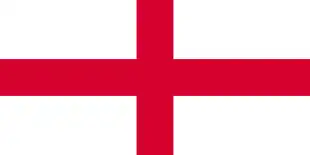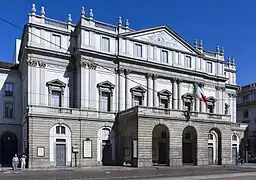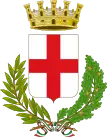
The following outline is provided as an overview of and topical guide to Milan:
Milan – capital of Lombardy and the second most populous city in Italy after Rome. Milan is considered a leading Alpha Global City,[1] with strengths in the arts, commerce, design, education, entertainment, fashion, finance, healthcare, media, services, research, and tourism. The city has long been named a fashion capital of the world and a world's design capital,[2] thanks to several international events and fairs, including Milan Fashion Week and the Milan Furniture Fair, which are currently among the world's biggest in terms of revenue, visitors and growth.[3][4][5] Milan is the destination of 8 million overseas visitors every year, attracted by its museums and art galleries that boast some of the most important collections in the world, including major works by Leonardo da Vinci.
General reference
Geography of Milan
- Milan is:
- a city
- the capital of Lombardy
- a city
- Population of Milan: 1,357,599[10]
- Area of Milan:
- Atlas of Milan
Location of Milan
- Milan is situated within the following regions:
- Time zone(s): Central European Time (UTC+01), Central European Summer Time (UTC+02)
Environment of Milan
Landforms of Milan
Areas of Milan
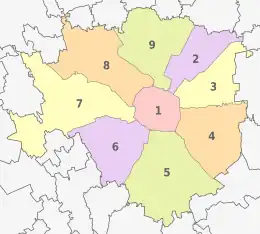
Zones of Milan
Districts of Milan
The districts of Milan, by zone:
|
|
|
|
|
|
|
|
|
Locations in Milan
- 10 Corso Como
- Biblioteca Ambrosiana
- Biblioteca di Brera
- Cimitero Monumentale di Milano
- Milan amphitheatre
- Planetario di Milano
- Walls of Milan
City gates of Milan
Gardens and parks in Milan

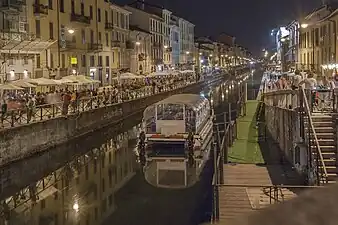
Museums and galleries in Milan
Museums and galleries in Milan
- Alfa Romeo Museum
- Armani/Silos
- Bagatti Valsecchi Museum
- Civic Aquarium
- Galleria d'Arte Moderna
- Gallerie di Piazza Scala
- Museo Civico di Storia Naturale di Milano
- Museo del Novecento
- Museo del Risorgimento
- Museo della Scienza e della Tecnologia "Leonardo da Vinci"
- Museo Diocesano
- Museo Poldi Pezzoli
- Museo Teatrale alla Scala
- Contemporary Art Pavilion
- Pinacoteca Ambrosiana
- Pinacoteca di Brera
- Sforza Castle
Public squares in Milan
Piazzas in Milan
Religious sites in Milan
Shopping malls in Milan
Streets and canals in Milan
Villas and palaces in Milan
- Casa Campanini
- Casa degli Omenoni
- Casa di Riposo per Musicisti
- Casa Manzoni
- Casa Panigarola
- Castello Cova
- Palazzo dell'Arengario
- Palazzo della Banca Commerciale Italiana
- Palazzo Belgioioso
- Palazzo Borromeo
- Palazzo Carminati
- Palazzo Castiglioni
- Palazzo dei Giureconsulti
- Palazzo Mezzanotte
- Palazzo della Ragione
- Palazzo delle Scuole Palatine
- Palazzo del Senato
- Royal Palace of Milan
- Villa Belgiojoso Bonaparte
Demographics of Milan
Government and politics of Milan
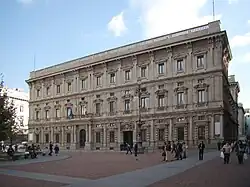
Government and politics of Milan
History of Milan
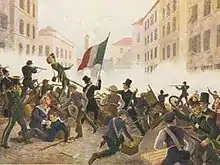
History of Milan, by period
History of Milan, by subject
Culture in Milan

.jpeg.webp)
.jpg.webp)
- Architecture of Milan
- Cuisine of Milan
- Fashion in Milan
- Languages of Milan
- Media in Milan
- Newspapers
- Radio stations
- Museums in Milan
- People from Milan
- Stolpersteine in Milan
- Symbols of Milan
Art in Milan

Ballet in Milan
Cinema of Milan
- Films set in Milan
Literature of Milan
Music of Milan
Theatre of Milan
Theatre school in Milan
Events and traditions in Milan
%252C_Wikimania_2016%252C_MP_003.jpg.webp)
Religion in Milan

Catholicism in Milan

Catholicism in Milan
- Bishop of Milan
- Diocese of Milan
- Roman Catholic Archdiocese of Milan
- Chiaravalle Abbey
- Garegnano Charterhouse
- Mirasole Abbey
Cathedrals in Milan
Basilicas in Milan
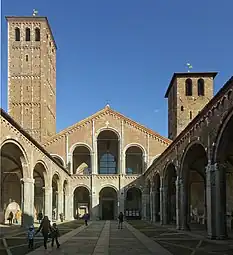

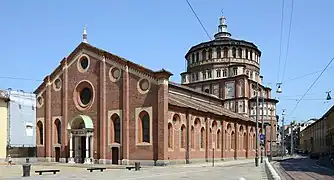

- Basilica of Sant'Ambrogio
- Basilica di San Calimero
- San Carlo al Corso
- Basilica of Sant'Eustorgio
- Basilica of San Lorenzo
- San Marco
- Santa Maria delle Grazie
- Santa Maria della Passione
- San Nazaro in Brolo
- Basilica of San Simpliciano
- Basilica di Santo Stefano Maggiore
- San Vincenzo in Prato
- San Vittore al Corpo
Churches in Milan
- San Angelo
- San Antonio Abate
- San Barnaba
- San Bernardino alle Ossa
- San Cristoforo sul Naviglio
- San Fedele
- San Giorgio al Palazzo
- San Giovanni in Conca
- San Gottardo
- Santa Maria del Carmine
- Santa Maria della Pace
- Santa Maria Incoronata
- Santa Maria presso San Celso
- Santa Maria presso San Satiro
- San Maurizio al Monastero Maggiore
- San Pietro in Gessate
- San Sebastiano
- San Sepolcro
- Oratorio di San Protaso
- Rotonda della Besana
Sports in Milan


- Basketball in Milan
- Football in Milan
- Association football in Milan
- Milan Derby
- Running in Milan
- Sports venues in Milan
Economy and infrastructure of Milan

- Banking in Milan
- Business district of Milan
- Hotels in Milan
- Restaurants and cafés in Milan
- Tourism in Milan
Transportation in Milan
Transport in Milan Airports in Milan
Rail transport in Milan

- ATM (Azienda Trasporti Milanesi)
- Trenord
- Railway stations in Milan
- Trams in Milan
- Trolleybuses in Milan
Milan Metro

Milan suburban railway service


Bicycle sharing systems in Milan
Education in Milan

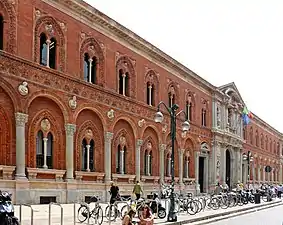
- Public education in Milan
- Academies in Milan
- Universities in Milan
Healthcare in Milan
Hospitals in Milan
See also
References
- ↑ "GaWC – The World According to GaWC 2010". Lboro.ac.uk. 14 September 2011. Archived from the original on 10 October 2013. Retrieved 10 July 2012.
- ↑ Shaw, Catherine (17 July 2016). "Milan, the 'world's design capital', takes steps to attract visitors year-round". South China Morning Post. Retrieved 15 October 2017.
- ↑ "The Global Language Monitor » Fashion". Languagemonitor.com. Archived from the original on 3 June 2011. Retrieved 1 June 2011.
- ↑ "Milan, Italy | frog". Frogdesign.com. Archived from the original on 1 May 2011. Retrieved 1 June 2011.
- ↑ "Milan Furniture Fair [Monocle]". Monocle.com. 30 April 2009. Archived from the original on 13 July 2012. Retrieved 10 July 2012.
- ↑ "Milan". Collins English Dictionary. HarperCollins. Retrieved 28 February 2019.
- ↑ "Milan". Merriam-Webster.com Dictionary. Retrieved 28 February 2019.
- ↑ Dizionario di toponomastica. Storia e significato dei nomi geografici italiani (in Italian). Torino: UTET. 1990.
- ↑ "Milan map". explo-re.com. 2017.
- ↑ "Statistiche demografiche ISTAT". demo.istat.it. Istat. Retrieved 14 October 2017.
- ↑ See List of largest church buildings in the world.
- ↑ Griffin, Clive (2007). Opera (1st U.S. ed.). New York: Collins. p. 172. ISBN 978-0-06-124182-6.
- ↑ "QS World University Rankings 2018". QS World University Rankings. Retrieved 9 October 2017.
